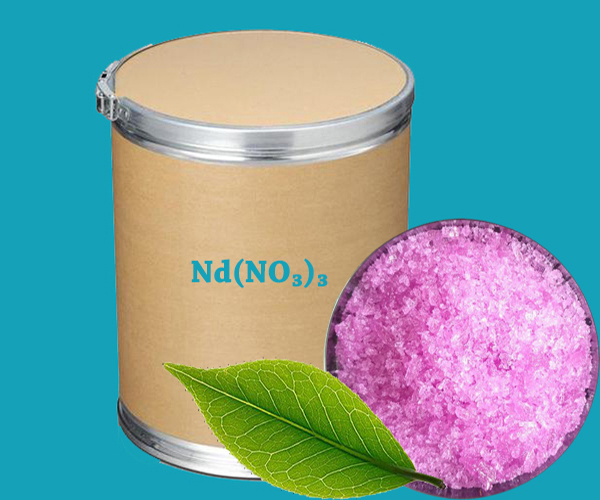Neodymium nitrate is an inorganic compound with the chemical formula Nd(NO3)3, mainly used for glass, crystals, capacitors,petrochemical catalysts,etc.
Properties
Chemical Formula : Nd(NO3)3.6H2O
CAS Number : 16454-60-7
Appearance : Rose crystalline aggregates
Solubleness : Soluble in water, moderately soluble in strong min
Molecular Weight : 438.25
Stability : Slightly hygroscopic
Neodymium Nitrate Application
Ceramics and Glass: Neodymium-doped glass and ceramics are used to create distinctive colors in art glass, decorative glassware, and stained glass. The addition of neodymium imparts a color-change effect, shifting from a bluish hue in natural light to a purplish-red under incandescent lighting.
Lasers: Neodymium-doped crystals, particularly neodymium-doped yttrium aluminum garnet (Nd:YAG) crystals, are essential for producing high-power solid-state lasers. Nd:YAG lasers find applications in material processing, laser engraving, medical procedures (e.g., eye surgery), and scientific research.
Magnets: Neodymium is a key component in the production of neodymium-iron-boron (NdFeB) magnets, which are known for their exceptional strength and magnetic properties. These magnets are used in various applications, including electric motors, speakers, hard drives, and magnetic separators.
Catalysis: Neodymium compounds, including neodymium nitrate, are utilized as catalysts in chemical reactions, particularly in the production of plastics and synthetic rubber.
Metallurgy: Neodymium is added to certain alloys, such as aluminum alloys, to improve their mechanical properties, including strength and corrosion resistance.
Phosphors: Neodymium-doped phosphors are used in various display technologies, including cathode ray tube (CRT) displays and flat-panel displays, to enhance color quality and efficiency.
Coloration in Glass and Plastics: Neodymium compounds are used as colorants in the production of colored glass and plastics, including sunglasses lenses, to achieve specific tints and shades.
Nuclear Reactors: Neodymium is used as a neutron absorber in nuclear reactors to control the rate of nuclear fission and maintain reactor stability.
MRI Scanners: Neodymium-based superconducting materials are employed in the construction of magnetic resonance imaging (MRI) scanners, contributing to their magnetic field generation.
Water Treatment: Neodymium-based compounds have been explored for their potential use in water treatment processes, including adsorption and removal of contaminants.
Research and Development: Neodymium compounds are used in scientific research and development across various fields, including materials science, chemistry, and physics.
 English
English Español
Español Português
Português Français
Français Deutsch
Deutsch Русский
Русский 中文
中文 日本語
日本語
